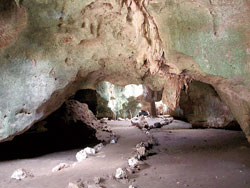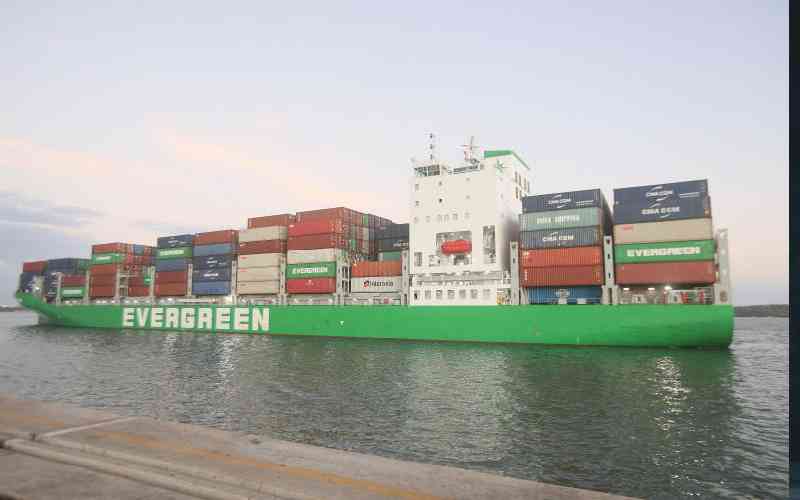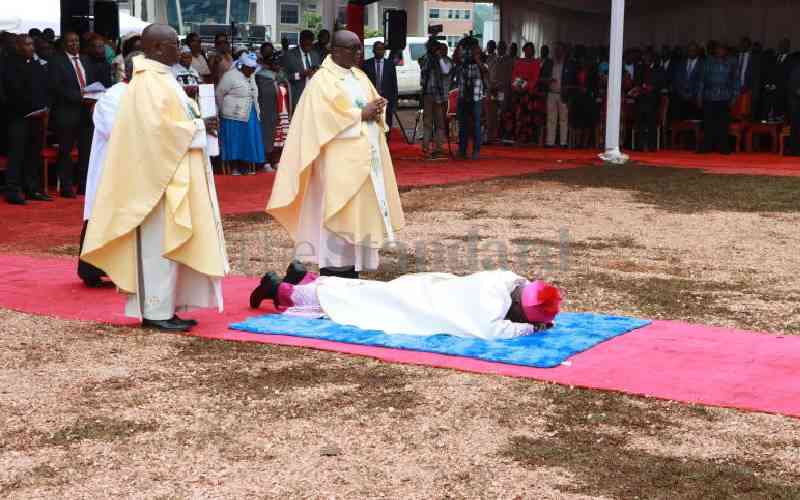The slave caves at Shimoni tell the gory stories of dehumanising conditions African slaves went through in the hands of their Arab captors, writes SONIA NJOGU
Last week, watching KTN’s expose on modern day slavery in the Middle East, where many Kenyan women are being lured with the promise of jobs only to be turned into servile doormats, sex slaves and punching bags, brought to mind the Arab slave trade at the Kenyan Coast in the 18th and 19th centuries.
This human trafficking thrived until the mid 19th Century. The anti-slavery campaign finally put a stop to slave trade in 1970. But it seems time does not heal all things, seeing as slavery has refused to crawl silently into some god-forsaken hole and stay there.
The Shimoni slave caves remain a stark reminder of the scandalous trade in natives sourced from the Kenyan Coast and Ukambani. This historical site is found in Shimoni village, an area in Kwale that fronts the ocean and lives on fishing and tourism. It is to these caves that Roger Whitaker, the white settler country singer, referred to when he sang we’ve got to find the answer and the answer has been written down in Shimoni.
The caves by the seashore were formed by natural forces millions of years back.
At the caves, metallic studs stuck to the walls with chains dangling from them signify only part of the torture and terror the slaves were put through in the hands of raiders, traders and masters.
The Lunatic Express
At the height of the infamous slave trade, the big slaving dhows from Arabia came down on the monsoon winds to the East Coast of Africa, returning with slaves who were captured by Arab caravans in the hinterland often after burning and ransacking whole villages in the most brutal circumstances, and then eventually shipped to the infamous slave market in Zanzibar for onward shipment.
As Charles Miller writes of the trade winds Kaskazi and Kusi in his epic, The Lunatic Express, merchant sailors from India, the Persian Gulf and the Eastern Mediterranean used the winds in their trade with Coastal inhabitants. In addition to elephant tusks used to make ivory, rhino horns that were a popular aphrodisiac and spices, "slaves and concubines were easily obtained on the Coast".
Shimoni caves served as a pen in which slaves would wait for two to three weeks before being shipped to Zanzibar. From there, they would be shipped to Yemen, Arabia and America. According to the National Museums of Kenya, Shimoni was initially the place where residents from the interior hid when running away from the slave hunters.
Human merchandise
Stories of the gross mistreatment of the slaves have been documented. Livingstone, the explorer, estimated that for every five slaves in a caravan, one reached the Coast alive. Thousands died on the march, their bodies left by the roadside to be devoured by wild animals. And for every African captured by slavers, ten others were killed. It is estimated that 20,000 slaves were shipped out of East Africa every year and the annual depopulation figure has been placed at between 250,000 and half a million.
On the crude dhows, which Miller describes as "waterborne pest houses", infectious diseases often broke out and all sick slaves were thrown overboard while others were left on board to die so the owner could "avoid paying the duty levied on those landed". Shackled slaves would easily be thrown into the shark-infested sea when ships carrying the human merchandise were pursued by those enforcing the ban on the trade or in case of strong waves and unstable conditions in the sea.
Miller also writes: "No one travelled first class. A slave dhow, though seldom more than 100 feet long, could accommodate as many as 600 involuntary passengers, crammed below deck in specially constructed bamboo tiers with about three feet (one metre) of headroom. Here, one neither sat nor knelt nor squatted, but achieved a crippling combination of the three."
Interesting attractions
Stay informed. Subscribe to our newsletter
Inland, the slave caravan routes included Machakos, Kitui, Kibwezi and Mariakani. The main caravan towns were Kibwezi, Mtito Andei, Kitui and Machakos while Vanga, Shimoni, Lamu and Takaungu were the slave ports and hideouts.
Slaves were also forced to work in plantations at the Coast, both in Kwale and in Lamu. The inhabitants served as middlemen between the Arabs and Indians and the African interior. Some of these plantations had more than 500 slaves each.
The historical sites and monuments linked to slave trade have become interesting attractions for tourists at the Coast. In addition to the Shimoni caves in Kwale, other sites include Fort Jesus in Mombasa, Gede Ruins in Malindi, Jumba la Mtwana in Kilifi and Rabai in Kilifi, where freed slaves were settled.
 The Standard Group Plc is a
multi-media organization with investments in media platforms spanning newspaper
print operations, television, radio broadcasting, digital and online services. The
Standard Group is recognized as a leading multi-media house in Kenya with a key
influence in matters of national and international interest.
The Standard Group Plc is a
multi-media organization with investments in media platforms spanning newspaper
print operations, television, radio broadcasting, digital and online services. The
Standard Group is recognized as a leading multi-media house in Kenya with a key
influence in matters of national and international interest.
 The Standard Group Plc is a
multi-media organization with investments in media platforms spanning newspaper
print operations, television, radio broadcasting, digital and online services. The
Standard Group is recognized as a leading multi-media house in Kenya with a key
influence in matters of national and international interest.
The Standard Group Plc is a
multi-media organization with investments in media platforms spanning newspaper
print operations, television, radio broadcasting, digital and online services. The
Standard Group is recognized as a leading multi-media house in Kenya with a key
influence in matters of national and international interest.










